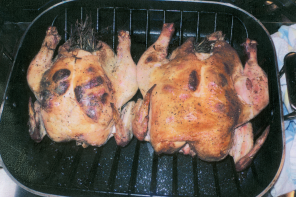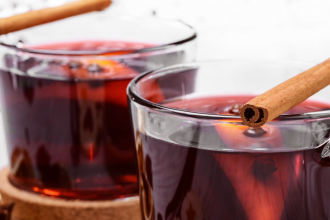Aging wine in oak barrels is the result of a happy accident with the good news that is has now become a large factor in winemaking giving many wines that little extra something.
Now for the bad news – the wood’s continued popularity is straining the world oak population. One oak tree is only good for two barrels (one barrel equates to about 300 bottles of wine), and each barrel can only be used two to three times before it’s delicious oaky flavor begins to fade. It doesn’t make things easier that it takes about 100 years for an oak tree to be ready for harvest, plus some styles dictate that the wood, once split, must be air-dried for up to three years. However, there are alternatives to oak barrels that are proving to be successful like oak chips and powders that impart flavor even if stainless steel barrels are used.
Like wine, oak is nuanced with type, size, tannin, age, grain, toast level treatment (the more the inside of the barrel is heated or toasted, the more poignant the flavors) and terroir lend each barrel a distinct personality. White oak trees are preferred for barrels, and chosen over their red counterparts, because they are less porous and hold liquid better. The wood is primarily harvested in the United States, France and Eastern Europe, and each variety offers a unique aromatic and flavor profile that influences the final product.
American
The most common variety is the American White Oak, found primarily in the eastern half of the US. This wood is a popular one for whiskey makers and is a favorite of Macallan Scotch Whisky. These barrels tend to be more outspoken in flavor with notes of dill, coconut and vanilla adding a creamy texture to the wine.
Oregon oak is also currently having a moment due largely to its similarities to French oak. Wine made from Oregon oak tends to boast softer tannins because of the massive amounts of rain the trees get in the Pacific Northwest.
French
French oak is the sweetheart of the oak world. Primarily found in central France, these oak barrels are much more expensive than one from other regions (a single French barrel can cost up to $4,000). This is in part because the wood boasts super fine grains from old-growth trees, making it less absorbent, and in part because many oak forests are owned and regulated by the French government. Government regulation of French oak sales is intended to help prevent deforestation, among other factors.
These barrels boast silkier tannins and approach flavor more subtly than American oaks, making them better fit for premium wines. Pinot Noir and Chardonnay are well-suited because they can soak up the flavor better than something like a Cabernet Sauvignon. Red wines tend to be imbued with spicier, nuttier notes, while whites gain floral and fruity aromas.
Eastern European
Eastern European oak is the safe zone between French and American, both in terms of price and flavor. If it weren’t for the World Wars, French winemakers might still favor Hungarian oak, but the economic and political turmoil of the 20th century forced French winemakers to find their own wood source. The reason for Hungarian oak’s popularity comes back to its terroir – the trees in the Zemplén Mountains grow slower and smaller thanks to volcanic soil, resulting in tighter grains. The flavors range from spicy to nutty to vanilla, often leading to a creamier texture, making the barrels better for full-bodied wines, like Malbec and Petit Verdot.








